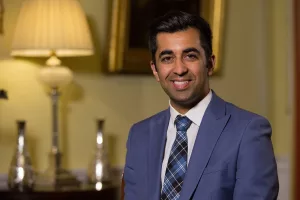On March 20, Sri Lanka obtained a $3 billion loan from the International Monetary Fund (IMF). The reason behind this loan is that the country is currently grappling with its most severe financial crisis since gaining independence from Britain in 1948. The IMF stated that this loan’s primary objective was to restore macroeconomic stability and debt sustainability while improving Sri Lanka’s growth.
What has led to this point of no return?
It is important to highlight that since 1948, Sri Lanka’s economy has faced various balance of payment crises. In fact, the country asked the IMF for assistance 16 times. However, what makes the country’s current situation different than it has been in the past is that this is the first time that the country has had to suspend debt repayments to its foreign creditors.
For the past three years, the country has faced economic difficulties. The situation can be traced back to 2019 when Gotabaya Rajapaksa’s (Sri Lanka’s president at the time) government implemented several tax cuts which resulted in a series of policy errors. Consequently, the country’s credit rating was downgraded in December 2019, making it difficult to borrow from international capital markets. The situation further deteriorated with the onset of COVID-19, which had a particularly devastating impact on the country’s crucial tourism industry. In fact, tourism in Sri Lanka contributed to 5.6% of the GDP and generated $4.4 billion in 2018. This fell to a mere 0.8% in 2020.
By the spring of 2020, Sri Lanka was at great risk of defaulting on its foreign loan payments. Since it did not have enough reserves of foreign currency to import any more in 2022, the country experienced a fuel shortage which then caused petrol and diesel prices to rise dramatically. The country defaulted on its foreign debt on April 12.
The government banned the sale of petrol and diesel for non-essential vehicles for two weeks. To this day, sales of fuel remain restricted. In order to conserve resources, schools were requested to close and certain individuals were advised to leave work ahead of schedule. This situation caused a political crisis, which resulted in island-wide protests. This led to the resignation of Mahinda Rajapaksa from the prime minister post in May. Two months later, President Gotabaya Rajapaksa was also compelled to resign.
Were there other solutions on the table other than the loan?
At the start of this year, the Export-Import Bank of China proposed a two-year moratorium on Sri Lanka’s debt and expressed support for their efforts to secure an IMF loan. However, this offer was not insufficient enough to allow the country to meet the IMF’s requirements. One key element is that China and India are both the largest lenders to Sri Lanka, with the former being owed $2.83 billion or 3.5% of the country’s external debt.
What is expected from this loan?
The primary objective of this loan is to promote economic stability and enhance the financial condition of the country. There are indications that the prospect of the loan has already had a positive impact on Sri Lanka’s economy. As a matter of fact, even prior to the official announcement, the government of Sri Lanka had reported in early March 2023 that the country’s stock market had surged by 6% over the past month. Moreover, its bonds had gained 20% since the beginning of the year, and its currency, the rupee, had stabilized against the dollar.
Although it is currently too early to discern any concrete impacts of the loan, the upcoming months will provide a clearer indication of whether or not it has truly contributed to the improvement of the country’s economic situation.
Featured image by: Reuters






